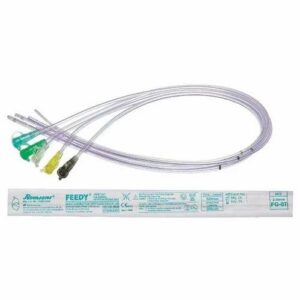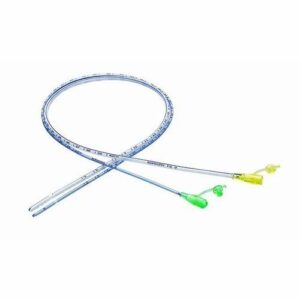INFANT FEEDING TUBE
INFANT FEEDING TUBE: The Infant Feeding Tube is a medical device primarily used for administering nutrition to infants who are unable to breastfeed or take oral feedings. It is typically a small, soft, and flexible tube made of silicone or polyurethane.
Use:
The primary use of the Infant Feeding Tube is to provide enteral nutrition to infants who cannot consume food orally. It is commonly used for premature babies or infants with various medical conditions or feeding difficulties. The tube is inserted through the nose or mouth and guided into the stomach or small intestine, allowing the delivery of formula or breast milk directly into the digestive system.
Mechanism of Action:
The mechanism of action of the Infant Feeding Tube is straightforward. Once inserted, it allows for controlled delivery of liquid nutrition into the gastrointestinal tract. The tube bypasses the mouth and esophagus, reaching the stomach or small intestine directly. This method ensures nutritional intake without relying on oral consumption.
Dose:
The appropriate dose and duration of feeding through the Infant Feeding Tube are prescribed by a healthcare professional based on the infant’s specific nutritional needs and medical condition. The amount and frequency of feedings are typically determined by the infant’s weight, age, and overall health.
Side Effects:
Some common side effects associated with the placement and use of the Infant Feeding Tube include:
1. Nasal discomfort: The tube’s placement may cause mild irritation or discomfort in the nasal passages.
2. Dislodgement or obstruction: The tube can sometimes get dislodged or blocked, requiring repositioning or replacement.
3. Nasal drainage or leakage: In some cases, there might be some drainage or leakage of fluid around the tube’s insertion site.
4. Infection: There is a potential risk of infection at the insertion site if proper hygiene practices are not followed.
5. Gastrointestinal complications: Rarely, infants may experience complications such as reflux, aspiration, or digestive issues related to the use of the feeding tube.
It is essential to consult with a healthcare professional to determine the appropriate use of the Infant Feeding Tube and to monitor the infant for any potential complications. The healthcare provider will provide specific instructions on tube placement, maintenance, and care to minimize the risk of side effects and ensure the baby’s nutrition needs are met safely and effectively.



